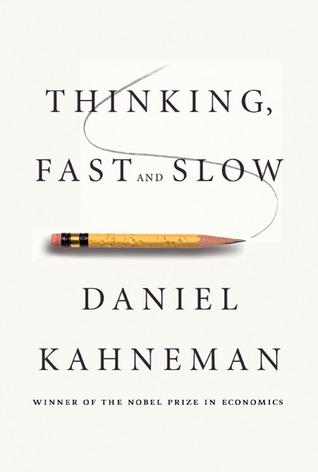Human minds are subject to predictable optical illusions, which can turn concentric circles into apparent interlocking spirals, make still things appear to be moving, and so forth.


There are also auditory illusions, like the Shepard Scale, which appears to be constantly ascending or descending in pitch while in reality it just cycles through the same set of notes:
People are also vulnerable to regular, predictable, remarkable flaws in the ways we predict events, handle statistical data and uncertainty, remember our own lives, assess the quality of our information, anticipate what will make us happy, and so forth. These cognitive illusions are only recently undergoing rigorous exploration, and Daniel Kahneman is one of the top names in the field.

In Thinking Fast and Slow, Kahneman introduces his model for understanding these illusions. Roughly: people have two cognitive systems for evaluating information and making decisions — System 1 and System 2. System 1 is fast, intuitive, subconscious, and automatic, but is prone to some easily-exploitable biases and illusions. System 2 is slow, must be deliberately invoked, works consciously, and saps mental energy; while it can fill in some of the gaps where System 1 fails, it has some blind spots of its own, and can be over-reliant on the snap judgments of System 1 as the basis for its own decisions.
The ways in which our minds can be persuaded to fail to make the right decisions are not at all subtle. For instance, people who hold one hand in a painfully-cold container of water for 60 seconds before removing it, and at another time hold the other hand in a painfully cold container of water for 90 seconds that gets slightly less-painfully cold during the last 30 seconds, will later report — more often than not — that they would prefer to repeat the second of these painful experiences over the first one, even though the second one includes just as much pain and even adds to it.
Then there is the “halo effect” by which if we find something to be good or bad in some quality, we tend to bias our beliefs about its other qualities in the same direction whether or not we have any good reasons to do so. For instance, when Claire Wolfe reports:
When I was a kid during the cold war, I had this image of the Soviet Union as a place that was always gloomy — perpetually leaden skies, perpetually leaden people, gray and brown garb, no joy. Even as a young adult I had a hard time wrapping my brain around the idea that even in darkest Siberia they had sunny days. Or that Russians loved their country. Or wore bright colors. Or that they sometimes sang and laughed and danced and joked.
Even now, I have to make a conscious mental adjustment to picture unfree places having sunshine or joy. Or residents who burn with love for them.
Wolfe is describing this “halo effect.” Her perception of the Soviet Union as a repressive tyranny subconsciously colored her ideas of its beauty, colorfulness, and the capacity for joy in the people who lived there. The converse of this is that when we suffer from this illusion, we may look around at our beautiful, colorful, joyful surroundings and blind ourselves to the potential of unseen tyranny.
There are many such illusions, and Kahneman describes several in detail. Many more, one suspects, remain to be mapped out.
The marketing and propaganda industries are of course eagerly studying this new research into the various ways in which they can trick us into parting with more of our resources or doing more of their bidding while receiving less in return. (I was not surprised, but a little alarmed, to learn that much of Kahneman’s research has been done with the support of the Israeli military, the U.S. Office of Naval Research, and the Advanced Research Projects Agency of the [U.S.] Department of Defense.) We, the intended victims, are much slower to educate ourselves. Perhaps books like this will help.
